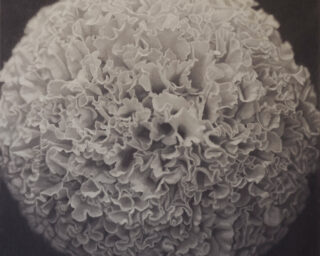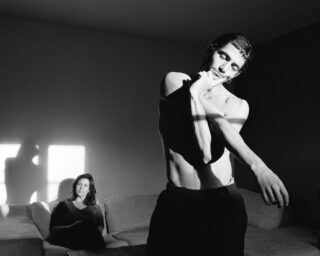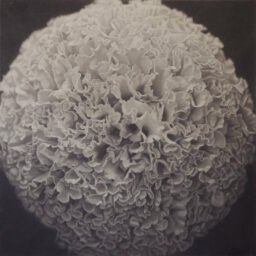David Wojnarowicz and Nan Goldin
In September of 1990, AIDS activist, writer, and artist David Wojnarowicz and photographer Nan Goldin, longtime friends, sat down for a three-hour conversation on Manhattan’s Lower East Side. Their conversation was originally commissioned by Interview magazine and Brant Publications, and excerpts were originally published in Interview’s February 1991 issue. The following excerpt was published in Aperture #137, from the fall of 1994, in an issue solely dedicated to the work of Wojnarowicz. In 1991, Wojnarowicz had been in talks with Aperture’s editors to publish a book of his work but he died of AIDS in July 1992 before the project was completed; the editors then posthumously published Brush Fires in the Social Landscape, as both a book and as a monographic issue of the magazine. “Not since Aperture’s earliest years—before there was a book publishing program—has an issue of the magazine been entirely devoted to the work of one contemporary artist,” the editors wrote in that issue. This year, on the twentieth anniversary of its publication, Aperture is releasing a new edition of Brush Fires in the Social Landscape. This excerpt also appeared in Issue 6 of the Aperture Photography App: click here to read more and download the app.
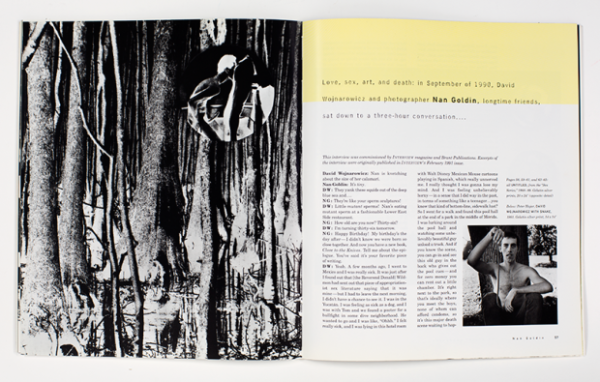
Spreads from Aperture magazine #137. Photographs by Thomas Bollier
David Wojnarowicz: Nan is kvetching about the size of her calamari.
Nan Goldin: It’s tiny.
DW: They yank these squids out of the deep blue sea and . . .
NG: They’re like your sperm sculptures!
DW: Little mutant sperms! Nan’s eating mutant sperm at a fashionable Lower East Side restaurant.
NG: How old are you now? Thirty-six?
DW: I’m turning thirty-six tomorrow.
NG: Happy Birthday! My birthday’s the day after—I didn’t know we were born so close together. And now you have a new book, Close to the Knives. Tell me about the epilogue. You’ve said it’s your favorite piece of writing.
DW: Yeah. A few months ago, I went to Mexico and I was really sick. It was just after I found out that [the Reverend Donald] Wildmon had sent out that piece of appropriationist sex literature saying that it was mine—but I had to leave the next morning, I didn’t have a chance to see it. I was in the Yucatan. I was feeling as sick as a dog, and I was with Tom and we found a poster for a bullfight in some dive neighborhood. He wanted to go and I was like, “Ohhh.” I felt really sick, and I was lying in his hotel room with Walt Disney Mexican Mouse cartoons playing in Spanish, which really unnerved me. I really thought I was gonna lose my mind. And I was feeling unbelievably horny—in a sense that I did way in the past, in terms of something like a teenager . . . you know that kind of bottom-line, sidewalk lust? So I went for a walk and found this pool hall and watching some believably beautiful guy unload a truck. And if you know the scene, you can go in and see this old guy in the back who gives out the pool cues—and for zero money you can rent out a little chamber. It’s right next to the park, so that’s ideally where you meet the boys, none of whom can afford condoms, so it’s this major death scene waiting to happen.
I was feeling this intense lust, just standing on the street corner in a daze, having these thoughts of lustful sex, and . . . and it got very frustrating, so I went back and told Tom, “Okay let’s go to the bullfight.” I figured maybe blood would wake me up, or snap me out of this daze. And during this bullfight I kept this journal which was horrifying. I mean, I’d seen a bullfight before on TV in Mexico City, and there was one guy who killed the bull—I suddenly understood what the sport was. Because it was one of the most unbelievable movements of the male body through space, so extraordinarily beautiful that the death was like a climax. And it made perfect sense in a very profound way. But these guys were like horrendous bullfighters, and they were totally carving up these bulls in the ring. So while I was there I started writing this piece, and it jumps between all the events of my childhood, from my first sexual experience as a six- or seven-year-old kid to the experience of my father, who was completely brutal and sadistic, to all these images of violence that I remember as a child.
My earliest memory is of hearing a police siren go by. And I remember running blocks to follow it and when I got there there was this guy in a white T-shirt on a front lawn with a gun to a woman’s head. So my piece jumps in all these random violent scenes in Jersey, and then sexual scenes, and it’s interspersed with this tense buildup of the bullfight. I sat there and just notated every description and color and smell, all the dust and the heat. I wove in some of the fantasy stuff from the pool hall and the guy unloading the truck, following that through in my imagination and getting the key and going to the room and crawling across the bed at him . . .
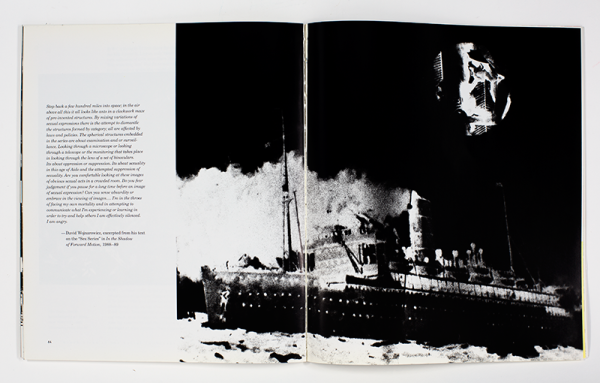
NG: Listening to you it seems like there’s no difference for you between then and now; your visual and verbal memories are so acute. I read your story about your trip to the meteor crater and it was like a road movie. I had the best sex after reading it.
DW: Wow, that’s great! My strongest memories are always connected to really powerful images, images that I can drift on, that I can never forget. Years ago, a trucker told me that driving a truck was the one thing in the world that made the most sense for people to do because you’re essentially at rest in the seat of the truck, and you’re alone. You’re encapsulated by the form of the vehicle—but at the same time your landscape is forever changing, so it’s not the same thing as being at home. It’s almost like the perfect state of being, to be floating through a landscape and at rest at the same time. I always love that feeling of riding in a car, except that mental stuff gets very, very intense. Your brain starts chattering away. Plus it gets very sexual, very sensual. You start populating that car with men.
. . .
NG: You write for relief from your own perceptions, but is it also because you think its important to leave a record? I think America is the land of revisionist memory.
DW: Absolutely. My two biggest impulses for writing the book were: if some kid gets a hold of it and would feel less alienated, great. I really suffered as a teenager, because I never had any indication n that there was anything out there that reflected myself. But I also wanted to leave a record. Because once this body drops I’d like some of my experience to live on. It was a total relief to have put words to what I put words to, an enormous relief.
NG: How did you go from living on the streets to living on the Lower East Side?
DW: I went to this halfway house for ex-cons. They thought I was so desperate that I’d become a convict if they didn’t take me in. Then I worked in manual labor here in New York and in custodial jobs. I mean, the same shit I’m doing now, you know. [Laughing.] In the art world. Just shifting through society’s garbage.
NG: Were you writing at the time?
DW: Yeah. I’ve been writing since I got off the streets. I started out writing bad poems, and then I started with the monologues in my early twenties. I’ve also made things since I was a kid. I used to make sexual “Archie” comics out of collage and then throw them down the incinerator whenever I’d hear my family coming home.
NG: When did you start showing your work publicly?
DW: Around 1982. Some jerk-off in SoHo actually called up Peter Hujar and asked him if he knew who had done these stencils on these abandoned cars on the Lower East Side. When I lived on the Bowery, whenever there was a car wreck, they dragged the wreck right outside my apartment and they’d leave it there for eight or nine months. Then I discovered that if I stenciled these images of war all over the wrecks, they’d tow them overnight. So for a while, I did that, and then I started stenciling on the walls and then I went through SoHo and spray-painted all these gallery doors with burning houses. I was going these action installations, along with Julie Hair, where we took a hundred pounds of bloody cow bones and threw them down the staircase at Leo Castelli’s, and stenciled an empty plate and knife and a fork on the wall, and then we ran off. This was right in the middle of a Saturday afternoon. Nobody raised an eyelash.
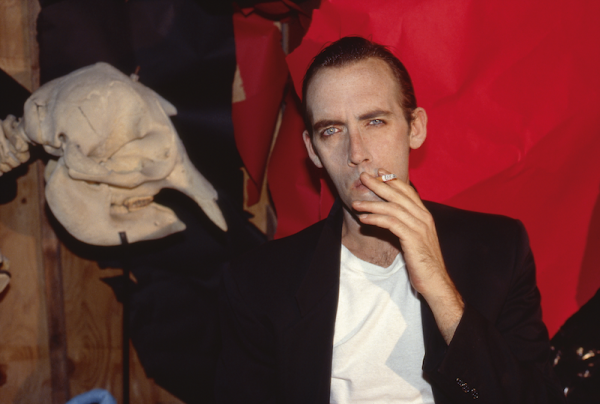
Nan Goldin, David Wojnarowicz at Home, New York City, 1991 © Nan Goldin, Courtesy Matthew Marks Gallery
NG: How do you feel about the art world right now?
DW: If the art world was reduced—if conditions in this country increase in the direction they’ve been going, and suddenly all art was made to look like tiny refrigerators, the art world wouldn’t falter for a moment. I think that the real power structure, the money structure, the boards of museums and institutions, 98 percent of these people would be happy to keep a market alive for small refrigerators. And those are the people who should be held accountable for the state of things in this country. They’ve never collected real culture in this country. Their mirror is completely tarnished. The only thing they reflect is their investments and their private collections.
NG: What would you like your work to do?
DW: I want to make somebody feel less alienated—that’s the most meaningful thing to me. I think part of what informs the book is the pain of having grown up for years and years believing I was from some other planet.
NG: A lot of people I know still see you as kind of a moral conscience for our time. How does that make you feel?
DW: I want people to hear me. I want to be understood and acknowledged to a certain extent. But do I think that something I say might have the weight to shift something? I don’t know.
NG: It does for me. It does for a lot of people.
DW: Good, but then you also have that effect on me. We can all affect each other, by being open enough to make each other feel less alienated. We all are able to have a profound effect on each other, a positive effect that sustains us. . . . But I ain’t no Jesus.











